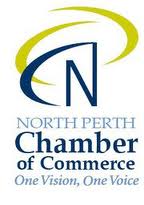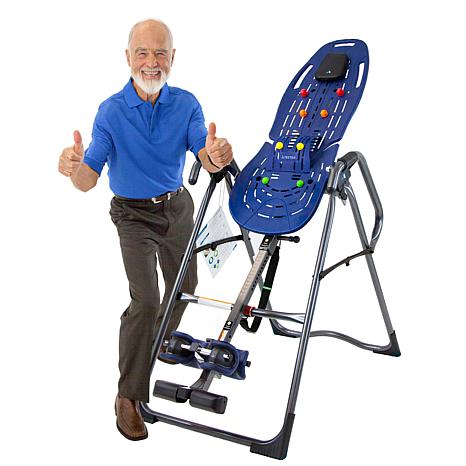

Copyright 2012 - 2020


CONNECT WITH US ON:






| Get our FREE E-Newsletter |



Teeter Manual Table Models:
FitSpine LX9 | FT1 | EP-970 Ltd. | EP-550 | EP-550 Sport | EP-560 | EP-560 Sport | EP-860 | EP-950 | EP-960 | Contour L5 Ltd.
Resources:
Before you buy | History of Teeter Hang Ups | Teeter's Commitment to Quality | Message from Roger Teeter | Teeter's Success Stories | Teeter TV | Comparing the Competition | FAQ's | History of Inversion | Benefits of Inversion | Medical Studies | Back Pain | Sciatic Overview | About your back | Our Client Testimonials | Our Store Directory | Store Photos
Trust Teeter for a
Better Back, Better Body!
Teeter Portable Decompression Devices:
Ez-Up Inversion System | Ez-Up Rack | Ez-Up Gravity Boots | P3 Back Stretcher (Lynx)
Frequently Asked Questions Continued...
Will inversion therapy help with a bulged disc?
Discs are the soft tissue between the vertebrae of the spine. They have a jelly-like center that is contained within a cartilage ring. Bulged, Herniated, Slipped or Prolapsed discs occur when the fibers of the cartilage weaken or are stressed to the point of allowing the nucleus to extend past its natural boundaries and in some cases rupture. The discs themselves do not have sensation, but disc damage can sometimes result in pressure on the nerves that run through the spine, which results in pain, numbness, or weakness.
When using a Teeter, the natural pull of gravity elongates the spine, increasing the separation between each vertebrae, helping to reduce pressure on nerve roots. In the case of a bulged disc, the action of increasing the space margins between the vertebrae can actually create a mild suction in the disc, which may help encourage the bulged nucleus to return to its proper place. This also encourages re-hydration of the disc, facilitating the natural healing process.
Several sessions a day of intermittent traction on the Teeter may offer the best results. Listen to your body and find an angle most comfortable for you. After inverting, take your time coming back upright, pausing at just above horizontal for 30 seconds, to allow the slow return of pressure to the damaged discs.
________________________________________________________________________________________________________________________________________
Will inversion help with headaches or migraines?
Some people have reported to us that inverting on a regular basis has actually helped reduce the frequency of migraine occurrences. However, we do not have any medical studies to specifically back this claim. Do not attempt to invert if you are in the middle of experiencing a migraine, as it could potentially worsen your headache.
________________________________________________________________________________________________________________________________________
Will inversion therapy help with improving blood flow from the lower limbs?
When inverted, you are helping your heart move venous blood from your legs and torso to the heart and lungs to be purified. Inversion also helps to move fresh, oxygen-rich blood from your heart and lungs to your upper body and brain.
When a muscle contracts, this squeezes capillaries and slows removal of wastes from the muscle. Sustained muscle contraction due to stress or muscle spasms causes wastes to accumulate in the tissue and this produces pain. Using a Teeter helps stretch and relax muscles and gravity helps the lymph system to clear out the pain-producing toxins trapped in tense muscles.
By stimulating circulation, inversion has been known to relieve varicose veins. Varicose veins are caused when blood pools in the veins due to weakened one-way valves. The downward pull of gravity causes blood to slip back, and over time the vein will distend and become painful. When inverting, the pressure is relieved and the heart is able to clear the blood from the lower body.
________________________________________________________________________________________________________________________________________
If someone has fused vertebrae, is it safe for them to invert?
There are many types of fusion surgeries. Some post fusion patients are helped by inversion. Any fusion patient should consult with a licensed physician before inverting.
________________________________________________________________________________________________________________________________________
Can inversion help children with Scoliosis? Does age matter?
Our medical adviser prefers to get patients involved with inversion as early as possible. Using inversion to help slow or reverse the effects of scoliosis is helpful at any age, but especially before the bones fully harden at ages 12-14. The size of the equipment may be an issue, so younger children will need an attendant.
There are many causes of scoliosis. Some causes may be problematic for inversion (bone infection, cancer, compression fracture). Most scoliosis in children is related to bone anomalies or calcification disorders, both of which do well with inversion. Of course, you should always consult with a licensed physician.
________________________________________________________________________________________________________________________________________
Will my ankles be uncomfortable? Can I use gravity boots with the inversion tables?
The EP-series Teeter tables feature the Ankle Comfort DialTM, the foot platform design dials up or down for smaller or larger feet, allowing the ankle clamps to attain a secure and comfortable fit.
Consider the EP-550 SportTM, which comes with the Gravity Boots. With soft foam liners and a flexible shell, the Teeter Hang Ups® Gravity Boots provide added support around the ankles. The standard size comes with calf loops, which place a two-degree bend in the knees, helping to reduce the loads place on the top of the feet.
Here are some tips for improving ankle comfort while inverted:
- Make sure you wear socks with lace-up shoes - the material will provide added cushion and support for the ankles.
- Fit the ankle clamps snug enough so you're secure, but don't clamp them super tight-- this will restrict blood flow and cause discomfort.
- Rotate the rear ankle clamps slightly downward before you secure your ankles. As you invert, they will rotate to cup the back of your heels.
- Adjust the foot platform so that there is minimal space between the top of your foot and the platform. The less your body 'shifts' when you invert, the better.
- Try oscillation and intermittent inversion first (rocking back and forth or short inversion sessions down then up). It may take days or even weeks to get comfortable with inversion, but you will soon adapt to the feeling.
____________________________________________________________________________________________________________________
Will I get any taller?
Sadly, inversion cannot make you taller than the height predetermined by your genes! However, inversion does help take care of the soft tissue in your joints, keeping them hydrated and healthy.
Inversion can also help you recover from daily height loss and combat progressive height loss. To understand the natural daily cycle of height loss, much can be learned from the Foreman[1] study. Following nurses during their daily activity, the study found greater loss of stature during 8 hour working shifts than during 12 hours periods on their days off. The average daily height loss for the 12 nurses in the study during the working day was 1.1% of their height, which for most of us translates to 1/2 to 3/4 inches per day.
The human body not only experiences height loss on a daily basis, but over a lifetime as well. Tanner[2] explains that most people will lose from 1/2" - 2" (1-5 cm) in height during their lifetime due the long-term affect of gravity on the soft tissue of the joints, notably the discs. As a baby, the intervertebral discs are 90% fluid. However, fluid content in the discs decreases to 70% by age 70, resulting in thinner discs that are less flexible and less shock-absorbent. An active inversion program can help maintain more of the body's original height by reducing the pressure on the intervertebral discs[3], encouraging fluid movement back into the spongy disc tissue.
--------------------------------------------------------------------------------
[1] Foreman, TK, et al: Diurnal variations in spinal loading and the effects on stature: a preliminary study of nursing activities. Clinical Biomechanics, 2: 48-54, 1987.
[2] Tanner, J. Beating Back Pain. London: Dorling Kindersley, 1987.
[3] Nachemson, A and Elfstrom, G: Intravital Dynamic Pressure Measurements in Lumbar Discs. Scandinavian Journal of Rehab Medicine, supplement, 1970.








